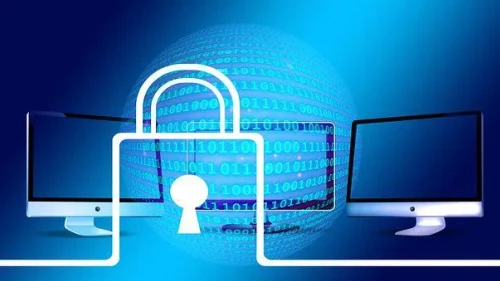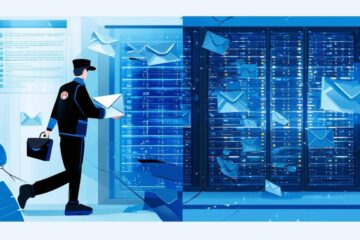Welcome to the ever-evolving world of cloud computing! Let’s dive into the importance of a well-designed cloud security architecture. As organizations transition to the cloud, it’s crucial to understand and implement robust security measures, especially for small businesses looking to protect their email systems.
In this guide, I’ll walk you through the basics of cloud security architecture, share key strategies for enhancing it, and highlight the essential components involved. Drawing from my own experiences navigating the complexities of cloud security, I aim to provide you with valuable insights.
Understanding Cloud Security Architecture
Cloud security architecture is more than just a buzzword; it’s a critical framework for safeguarding data, applications, and infrastructure in cloud environments. This architecture encompasses various policies, technologies, and controls that work together to defend against numerous threats and vulnerabilities.
The Significance of Cloud Security Architecture

 In my journey through various cloud projects, I’ve discovered that a secure cloud environment relies on a well-thought-out security architecture. This architecture ensures the confidentiality, integrity, and availability of cloud resources, essential for business operations and data protection.
In my journey through various cloud projects, I’ve discovered that a secure cloud environment relies on a well-thought-out security architecture. This architecture ensures the confidentiality, integrity, and availability of cloud resources, essential for business operations and data protection.
Confidentiality ensures that data is only accessible to authorized individuals, maintaining security. Integrity ensures data remains accurate and unaltered. Availability ensures cloud services are accessible when needed.
The growing reliance on cloud services has elevated the risk of security breaches. A comprehensive cloud security architecture addresses risks like data breaches, intellectual property theft, and operational disruptions. It involves deploying security tools and creating a strategic framework that covers all aspects of cloud security.
Key Strategies for Strengthening Cloud Security
Enhancing cloud security requires a strategic approach and the adoption of best practices.
Here are some effective strategies I’ve found useful for boosting cloud security:
Understanding the Shared Responsibility Model

 One fundamental aspect of cloud security is grasping the shared responsibility model. This model clarifies the responsibilities of Cloud Service Providers (CSPs) and customers in securing the cloud environment.
One fundamental aspect of cloud security is grasping the shared responsibility model. This model clarifies the responsibilities of Cloud Service Providers (CSPs) and customers in securing the cloud environment.
Many organizations mistakenly assume that their CSP handles all aspects of cloud security. However, the shared responsibility model emphasizes that while CSPs secure the infrastructure, customers must manage data and application security in the cloud.
Best Practices for Implementing the Shared Responsibility Model:
- Clarify Roles and Responsibilities: Define which security tasks the CSP performs and which are the customer’s responsibility to avoid gaps in security.
- Frequent Reviews: Regularly assess security practices and compliance with shared responsibility agreements to address issues proactively.
- Training and Awareness: Educate your team on their roles within the shared responsibility framework to ensure everyone understands their role in maintaining cloud security.
Implementing Multi-Layered Security Controls
Multi-layered security, also known as defense-in-depth, involves deploying multiple layers of security controls to thwart various threats. Each layer offers a different level of protection, making it harder for attackers to breach the system.
A multi-layered approach may include:
- Network Security: Employ firewalls, intrusion detection systems, and other tools to protect the cloud environment perimeter.
- Application Security: Follow secure coding practices, conduct regular code reviews, and perform vulnerability assessments to safeguard applications.
- Data Security: Use encryption, access controls, and data masking to protect sensitive data.
- Identity and Access Management (IAM): Implement robust authentication mechanisms and access controls to restrict access to authorized users.
Regular Security Assessments and Penetration Testing

 Regular security assessments and penetration testing are crucial for identifying vulnerabilities in your cloud environment. These assessments help you understand and address potential attack vectors before malicious actors exploit them.
Regular security assessments and penetration testing are crucial for identifying vulnerabilities in your cloud environment. These assessments help you understand and address potential attack vectors before malicious actors exploit them.
Based on my experience, conducting regular security assessments and penetration tests helps identify vulnerabilities and ensures security measures remain effective and up-to-date. This proactive approach helps maintain a robust security posture and mitigate risks.
Automating Security Processes
Automation plays a vital role in modern cloud security. By automating security processes, you can enhance efficiency, reduce human error, and respond promptly to potential threats.
Automation can be applied to various aspects of cloud security, including:
- Incident Response: Automated incident response systems can swiftly detect and respond to security incidents, minimizing their impact.
- Compliance Monitoring: Automated tools can continuously monitor and report on compliance with security policies and regulatory requirements.
- Patch Management: Automated systems ensure software and systems are up-to-date with the latest security patches, reducing vulnerabilities.
Key Components of Cloud Security Architecture
A well-designed cloud security architecture comprises several key components critical for protecting the cloud environment. Here are the essential elements based on my experience:
Cloud Security Policies and Governance
Establishing clear security policies and governance frameworks is essential for maintaining cloud security. These policies should outline security requirements, compliance obligations, and best practices for managing cloud resources.
Effective cloud security governance involves:
- Policy Development: Create comprehensive security policies covering various aspects like data protection, access controls, and incident response.
- Compliance Management: Ensure policies align with regulations and industry standards, updating them regularly to reflect changes.
Identity and Access Management (IAM)
IAM is crucial for cloud security, managing user identities and controlling access to resources. Effective IAM practices ensure only authorized users access sensitive data and applications.
Key IAM practices include:
- User Authentication: Implement strong authentication mechanisms like multi-factor authentication (MFA) to verify user identities.
- Access Controls: Define and enforce access controls based on the principle of least privilege to restrict unnecessary access.
- Role-Based Access Control (RBAC): Assign permissions based on user roles to simplify access management and reduce unauthorized access risks.
Data Protection and Encryption

 Data protection is foundational to cloud security. Encrypting data in transit and at rest safeguards sensitive information from unauthorized access and breaches.
Data protection is foundational to cloud security. Encrypting data in transit and at rest safeguards sensitive information from unauthorized access and breaches.
Effective data protection practices include:
- Encryption: Use robust encryption algorithms to protect data during transmission and storage, securely managing encryption keys.
- Data Masking: Implement techniques to shield sensitive information in non-production environments.
- Data Backup and Recovery: Regularly back up data and have disaster recovery plans in place for data restoration in case of loss or corruption.
Network Security
Network security involves measures to safeguard cloud infrastructure from external and internal threats, securing network traffic, protecting against DDoS attacks, and monitoring activity.
Essential network security practices include:
- Firewalls: Deploy firewalls to filter and monitor network traffic, blocking unauthorized access and potential threats.
- Intrusion Detection and Prevention Systems (IDPS): Use IDPS to detect and respond to suspicious activities and potential breaches.
- Virtual Private Network (VPN): Utilize VPNs to establish secure connections between users and cloud resources for data confidentiality and integrity.
Security Monitoring and Incident Response

 Continuous monitoring and effective incident response are vital for cloud security. Implementing security monitoring tools and having a defined incident response plan helps detect and address security incidents promptly.
Continuous monitoring and effective incident response are vital for cloud security. Implementing security monitoring tools and having a defined incident response plan helps detect and address security incidents promptly.
Key practices include:
- Security Information and Event Management (SIEM): Use SIEM tools to collect, analyze, and correlate security events and logs.
- Incident Response Plan: Develop and update an incident response plan outlining procedures for detecting, analyzing, and responding to security incidents.
- Threat Intelligence: Utilize threat intelligence to stay informed about emerging threats, enhancing your ability to thwart potential attacks.
Continue Learning About Cloud Security Architecture Fundamentals
Building a robust cloud security architecture is a multifaceted process that demands a deep understanding of key strategies and components. By following best practices, grasping the shared responsibility model, and focusing on essential security components, organizations can fortify their cloud security posture and safeguard their assets in the cloud.
Cloud security is an ongoing journey that requires continuous improvement and adaptation to evolving threats.
As businesses embrace cloud computing, investing in a comprehensive cloud security architecture and email protection plan is vital to safeguard data, applications, and infrastructure.
Stay informed about enhancing cloud email security by exploring the resources below:
- Implementing a comprehensive email security system can mitigate advanced threats like targeted spear phishing and ransomware.
- Adopting best practices can bolster your email security posture against attacks.
- Ensure email integrity by securing the cloud with spam filtering and enterprise-grade anti-spam services.
- Stay updated on online safety measures to protect your digital assets.



